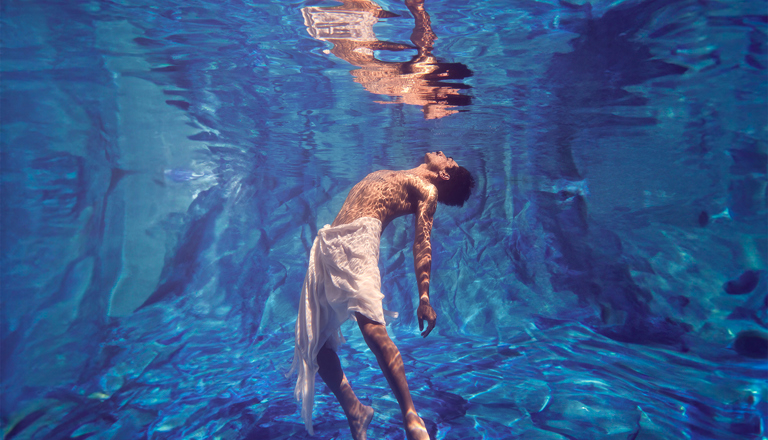
- Family Background:
- Jacqueline Carter is of Māori and Pākehā or “New Zealand European” descent, being Ngāi Te Rangi on her paternal grandfather’s side and Ngāti Awa and Waitaha on her paternal grandmother’s, with links to Ngāi Tai, Ngāti Maru, and Ngāpuhi Nui Tonu. Her Pākehā ancestors hail from England, Ireland, and Scotland.
- Biography:
Karanga atu rā
ki ngā rangi tuhāhā
ki Te Toi o ngā rangi ē !
Karanga mai rā
Karanga mai rā ē!
Karanga mai rā
ki ngā Puna wairua
ki ngā Puna roimata
ki ngā Puna tangata ē
Karanga mai rā!
Karanga mai rā ē!
Tēnā rā koutou e te pae tapu o te hapū o Gadigal o te iwi o Eora ē
koutou e pupuri i te mauri kōrero o ngā mātua tūpuna ē
Tēnā rā koutou ē !
Jacqueline Carter is of Māori and Pākehā or “New Zealand European” descent, being Ngāi Te Rangi on her paternal grandfather’s side and Ngāti Awa and Waitaha on her paternal grandmother’s, with links to Ngāi Tai, Ngāti Maru, and Ngāpuhi Nui Tonu. Her Pākehā ancestors hail from England, Ireland, and Scotland. She is a mother, teacher, poet, singer, and songwriter, with a Bachelor of Arts in Māori Studies, a Graduate Diploma in Teaching Secondary (Te Reo Māori/the Māori Language), and a Masters of Creative Writing. She teaches at her old secondary school, Epsom Girls’ Grammar School, where she is Kaitiaki or Guardian of all taonga (treasures) Māori, people and things included, Head of Department for Te Reo Māori, Teacher In Charge of Kapa Haka, and an In School Lead for Mātauranga Māori (Māori Knowledge and Education).
‘Whakatangitangi mai’ was written in the late 90s or early 2000s about the revival of taonga puoro, traditional Māori instruments. It was recorded in a converted shower cubicle on multi-media artist James Webster’s first EP Hauororua, produced by Charlie Brown. It has since been included in the soundtrack for a couple of short Aotearoa New Zealand films and documentaries and by the Royal New Zealand Ballet for their production of ‘The Piano’. It encourages us to play and/or keep playing the taonga puoro, whose voices originate in the forest, the ocean, the land, and in the winds of the atua or god/spiritual being Tāwhirimātea. It urges us to play these descendants of the atua or goddesses Hineraukatauri (Goddess of the Bag Moth) and Hinepūtehue (Goddess of the Gourd), to bring back the essence of the atua to the world around us. It also tells us to listen to the voices of people as they speak, sing, and karanga (a ritual call), which in doing so follow in the footsteps of their tuākana or older siblings, being the taonga puoro and the sounds of the natural world that were able to be heard by our tūpuna or ancestors in a way that I believe we aren’t able to hear unassisted anymore.
I hope you enjoy it, and that it moves you, and I thank the Bangarra Dance Theatre, Moss Te Ururangi Patterson, and my old friend James for wanting to include it in Horizon’s ‘The Light Inside’. I consider it an honour to be included in what Moss described to me as a “significant collaboration between Te Ao Maōri [the Māori World] and Te Whenua Moemoeā [The Land of the Dreamtime]”. I understand it is the first mainstage cross-cultural collaboration between the indigenous peoples of Te Ika a Māui (The Fish of Māui or the North Island of Aotearoa New Zealand), Te Waka a Māui (The Canoe of Māui or the South Island of Aotearoa New Zealand), and Te Pāpaka nui a Māui (The Great Crab of Māui, otherwise known as Australia). I also acknowledge and pay respect to the Gadigal people of the Eora Nation, upon whose country the Bangarra Dance Theatre is based, and I acknowledge the whenua or country itself. Nō reira, e ngā maunga, e ngā awa, e ngā moana, e te whenua o te iwi Eora me ōna hapū katoa, tēnā koutou, tēnā koutou, tēnā koutou, tēnā tātou katoa.
“Nāu te rourou, nāku te rourou, ka ora ai te iwi” –
“With your foodbasket, and my foodbasket, the people will be fed”.

